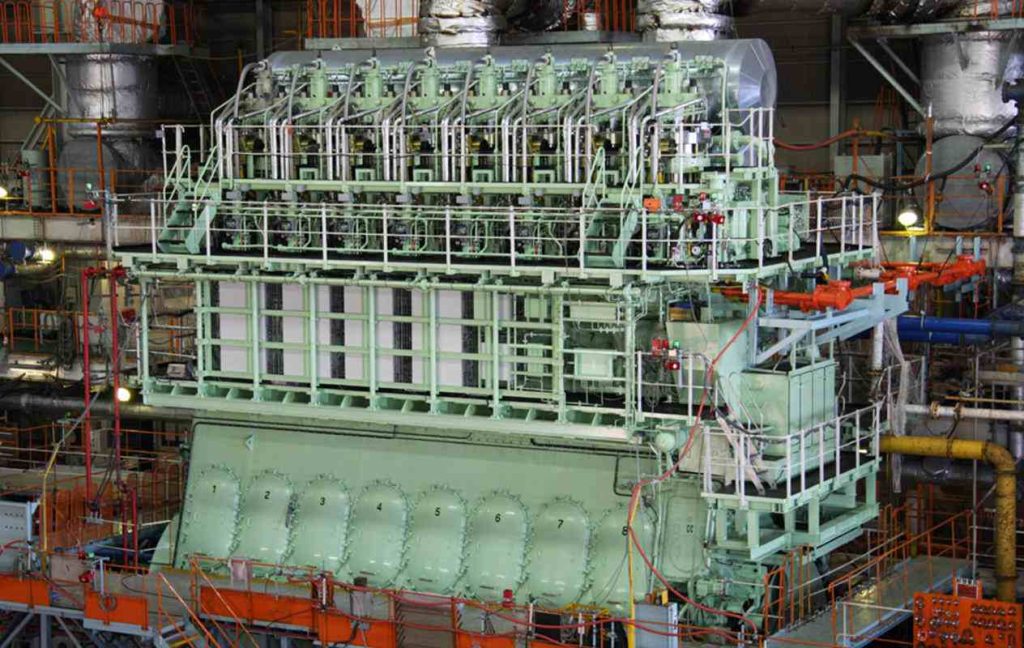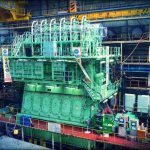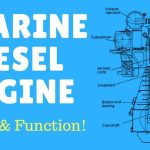There are two types of marine diesel engines: two-stroke and four-stroke.
Two Stroke Cycle
Starting with the piston at bottom dead center (BDC), the combustion air is supplied to the liner air inlet ports and the piston starts to rise up the liner. Depending on the scavenging system, the piston either ejects the previous cycle exhaust gases out exhaust ports in the liner or out through an exhaust valve in the cylinder head.
The combustion air continues to be compressed to almost top dead center (TDC) when the fuel is injected and combusted by compression ignition, forcing the piston back down the liner.
Four Stroke Cycle
1. Exhaust Stroke – Starting again with the piston at BDC, it begins to rise up the liner, with the exhaust valve in the cylinder head opening and expelling the exhaust gasses during the upward stroke.
2. Inlet Stroke – The inlet valve now opens and combustion air is drawn in as the piston continues downwards.
3. Compression Stroke – After reaching BDC the piston starts to rise again and the inlet valve shuts.
4. Ignition/Power Stroke – As the piston continues to rise with both valves shut, and just before TDC, fuel is injected and is combusted through compression ignition, forcing the piston downwards on its power stroke.



Comments are closed